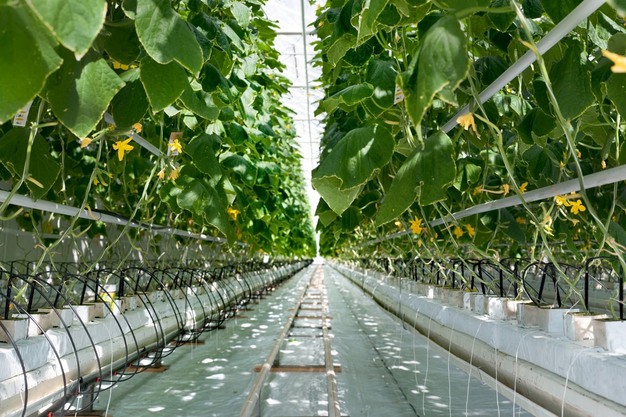Dutch greenhouse horticulture is extremely efficient. Looking at nutrients, we are on our way to achieving 'virtually' zero emissions by 2027, to meet the Water Framework Directive. However, to date, little attention was paid to the other end of the chain: that which enters the greenhouse, i.e. the source of these nutrients.
Unlike open-field arable farming, where animal manure can be used, greenhouse horticulture depends entirely on inorganic fertilizers: pure minerals that feed the plants when dissolved in water. Our research started with phosphorus (P) as one of these minerals. One-third of all mineral phosphorus imported into the Netherlands is used in greenhouse horticulture. Regardless of our efficiency with these fertilizers, mineral-based fertilizers are mined from finite natural reserves. Moreover, mining has an environmental impact.
Residual streams containing phosphorus
This is why researches looked into phosphorus from circular sources. They evaluated several options to extract phosphorus from residual streams using existing technologies, looking at them from the perspective of greenhouse horticulture.

Cow and pig manure and compost contain relatively low levels of phosphorus and already have other uses as well. Compost is also expensive. This rules them out at this point, and there are other sources that seem more viable.
Researchers think sewage sludge ash shows lots of potential. This is the ash that results from incinerating sewage sludge. Large quantities of this ash are produced annually by wastewater treatment plants (WWTPs). Ironically, this ash is currently buried deep underground in mines. The sewage sludge ash produced by Dutch WWTPs each year contains 7.5 tonnes of phosphorus, which is three times greenhouse horticulture's annual demand. Could this be an opportunity to help close the phosphorus loop?
Addressing grower concerns
Our research shows that, in terms of economics, greenhouse horticulture is an interesting potential market. A typical phosphorus fertilizer for greenhouses has a higher price than mineral phosphorus fertilizer for open-field farms. Why is phosphorus from sewage sludge ash not yet applied in greenhouse horticulture?
Part of the answer lies in practical hurdles. Some methods (like struvite precipitation) recover phosphorus in a form that makes it difficult to apply in greenhouses since the resulting product cannot be directly dissolved in water. Instead, an acid must be added, which can mean the nutrient recipe will end up changing a bit.
Furthermore, high-tech greenhouses reuse water that is not taken up by the crop. These recirculating systems are what allow greenhouse horticulture to be so nutrient-efficient. If a fertilizer contains contaminants (heavy metals, for example), these contaminants may accumulate within the system, leading to risks. The ambition to achieve near-zero nutrient emissions through efficiency makes circularity more challenging.
They calculated the maximum contaminant levels in fertilizers to rule out risks, which should help growers gain confidence.
The Living Lab Circular Greenhouse KB project is now in its second year. They have produced an overview of different phosphorus recovery routes to make residual streams suitable, including technologies already being applied by various companies. They also have an overview of the considerations for greenhouse horticulture when using circular phosphorus.
The remaining opportunity is to link the two sectors. Circular phosphorus manufacturers are seeking high-value markets for their products but are insufficiently familiar with the greenhouse horticulture sector. At the same time, greenhouse horticulture is equally unfamiliar with phosphorus from residual streams. Still, the sector is looking for sustainable alternatives to mineral phosphorus.
Linking producers to growers
To start linking phosphorus recovery to greenhouse horticulture, I presented at two different scientific conferences. The audience at the NERM, on nutrients from residual streams, was surprised by the size of the Dutch greenhouse horticulture market and by how well the use of circular phosphorus fits this sector. At the EHC, it was the other way round. Here, I linked the recovery of minerals to the efficient recirculating growing systems used in Dutch greenhouse horticulture.
At both events, I was met with enthusiasm. There are great opportunities to foster links between these two sectors, which they are continuing in this Living Lab project. In other projects, they intend to study other fertilizers in a similar way. These are two worlds that are uniquely capable of helping each other and have a lot to gain from becoming more familiar with each other.
Source: wur.eu

